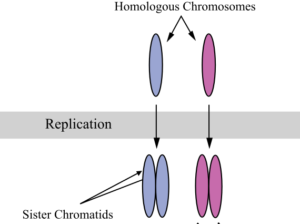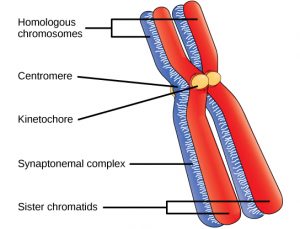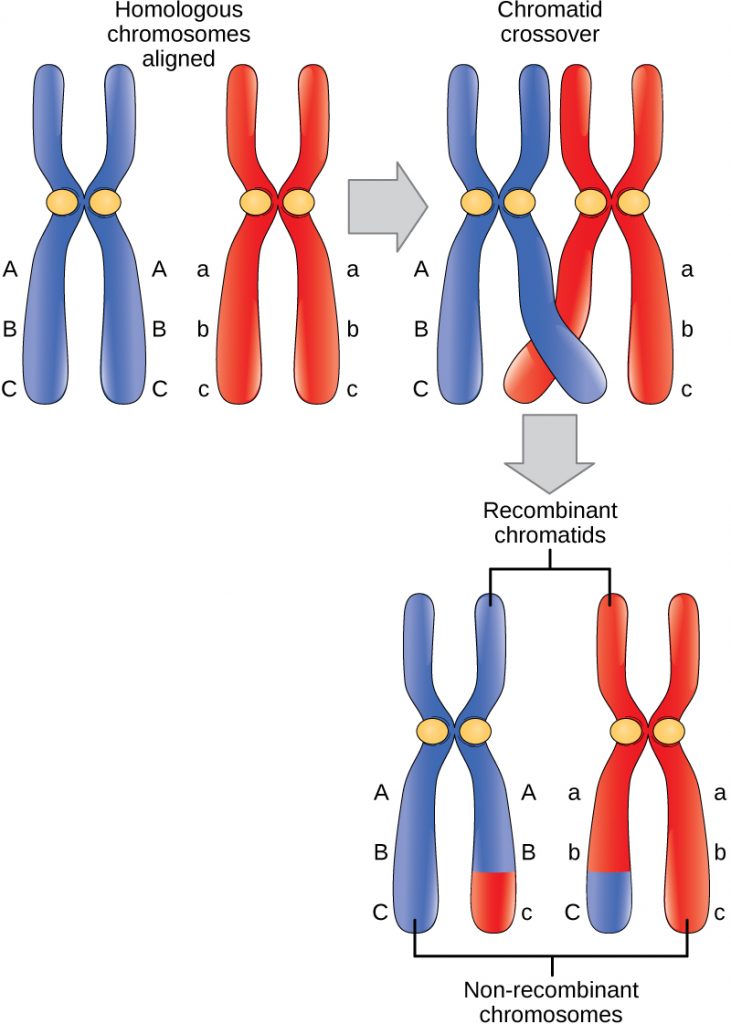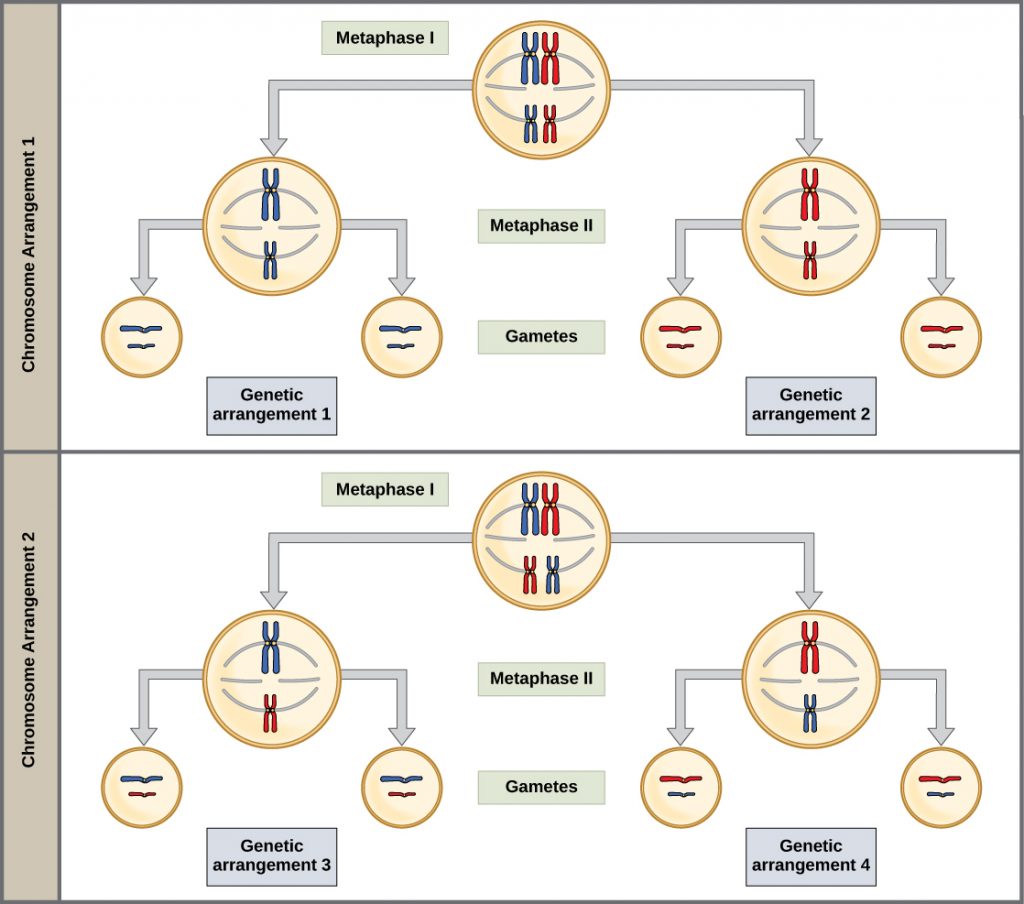82 Meiosis I
Interphase
Meiosis is preceded by an interphase which is nearly identical to the interphase preceding mitosis. During interphase, the DNA of the chromosomes is replicated (during S phase). After DNA replication, each chromosome becomes composed of two identical copies (called sister chromatids) that are held together at the centromere.

Meiosis I
Meiosis is preceded by an interphase which is nearly identical to the interphase preceding mitosis. During interphase, the cell grows, ensures it has enough energy and other required molecules for division, and replicates its DNA.
During DNA replication, each chromosome is replicated to produce two identical copies, called sister chromatids, that are held together at the centromere. The centrosomes, which are the structures that organize the microtubules of the meiotic spindle, also replicate. This prepares the cell to enter meiosis I.
Early in meiosis I, the chromosomes condense (wind up tightly). As the nuclear envelope begins to break down, the proteins associated with homologous chromosomes bring the pair close to each other. After the homologous chromosomes are aligned tightly with each other, the genes on each of the chromatids are precisely aligned with each other. This process does NOT occur during mitosis.

After the genes on the chromatids of the homologous chromosomes are aligned precisely with each other, an exchange of chromosome segments between non-sister homologous chromatids occurs. This is called crossing over (Figure 3). The crossover events are the first source of genetic variation produced by meiosis. A single crossover event between homologous non-sister chromatids leads to a reciprocal exchange of equivalent DNA between a maternal chromosome and a paternal chromosome. Now, when that sister chromatid is moved into a gamete, it will carry some DNA from the mother of the person who made the gamete and some DNA from the father of the person who made the gamete. The recombinant sister chromatid has a combination of maternal and paternal genes that did not exist before the crossover.

After crossing-over, microtubules grow from centrosomes placed at opposite poles of the cell and attach to one of the two fused homologous chromosomes. The microtubules attach at each chromosomes’ centromeres. With each member of the homologous pair attached to opposite ends of the cell, the microtubules can pull now the homologous chromosomes apart. The cell undergoes cytokinesis to divide into two new cells. The end result of meiosis I is that the homologous pairs of chromosomes have been separated so each new cell only contains one copy of each homologous chromosome.
The orientation of each pair of homologous chromosomes at the center of the cell is random. This randomness, called independent assortment, is the physical basis for the generation of the second form of genetic variation in offspring (Figure 5). Consider that the homologous chromosomes of a sexually reproducing organism are originally inherited as two separate sets, one from each parent in the egg and the sperm. Using humans as an example, one set of 23 chromosomes is present in the egg donated by the mother. The father provides the other set of 23 chromosomes in the sperm that fertilizes the egg. These pairs line up at the midway point between the two poles of the cell. Because there is an equal chance that a microtubule fiber will encounter a maternally or paternally inherited chromosome, the arrangement of the chromosomes at the metaphase plate is random. Any maternally inherited chromosome may face either pole. Any paternally inherited chromosome may also face either pole. The orientation of each tetrad is independent of the orientation of the other 22 tetrads.

To summarize the genetic consequences of meiosis I: the maternal and paternal genes are recombined by crossover events occurring on each homologous pair during prophase I; in addition, the random assortment of tetrads at metaphase produces a unique combination of maternal and paternal chromosomes that will make their way into the gametes.
Summary of Meiosis I
The chromosomes are copied during interphase (prior to meiosis I). This forms two identical sister chromatids that are attached together at the centromere. Crossing-over introduces genetic variation by swapping pieces of homologous chromosomes. Additional genetic variation is introduced by independent assortment, which takes into account how the homologous chromosomes line up in the middle of the cell. At the end of meiosis I, two haploid cells (where each chromosome still consists of two sister chromatids) are produced.
References
Unless otherwise noted, images on this page are licensed under CC-BY 4.0 by OpenStax.
OpenStax, Biology. OpenStax CNX. January 2, 2017 http://cnx.org/contents/s8Hh0oOc@9.10:1Q8z96mT@4/Meiosis

